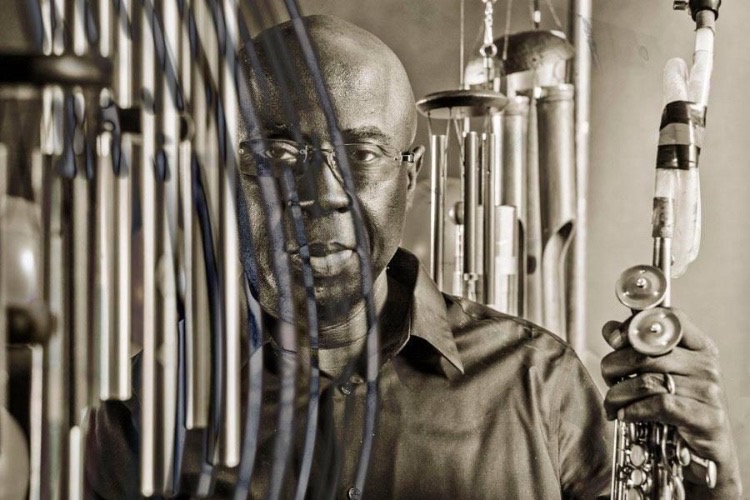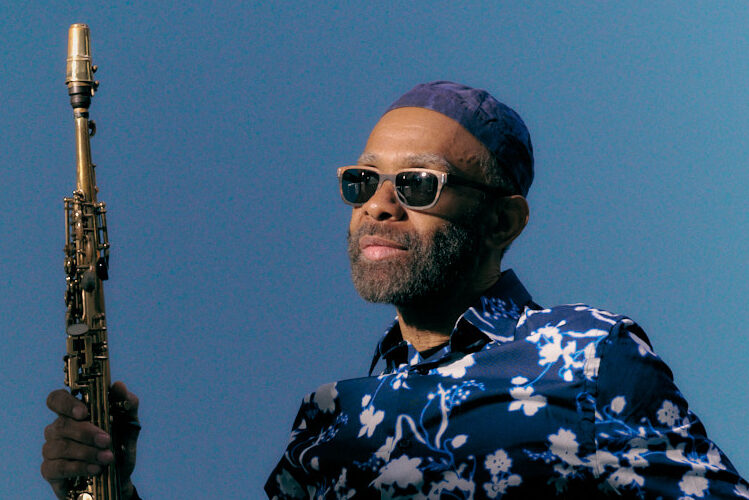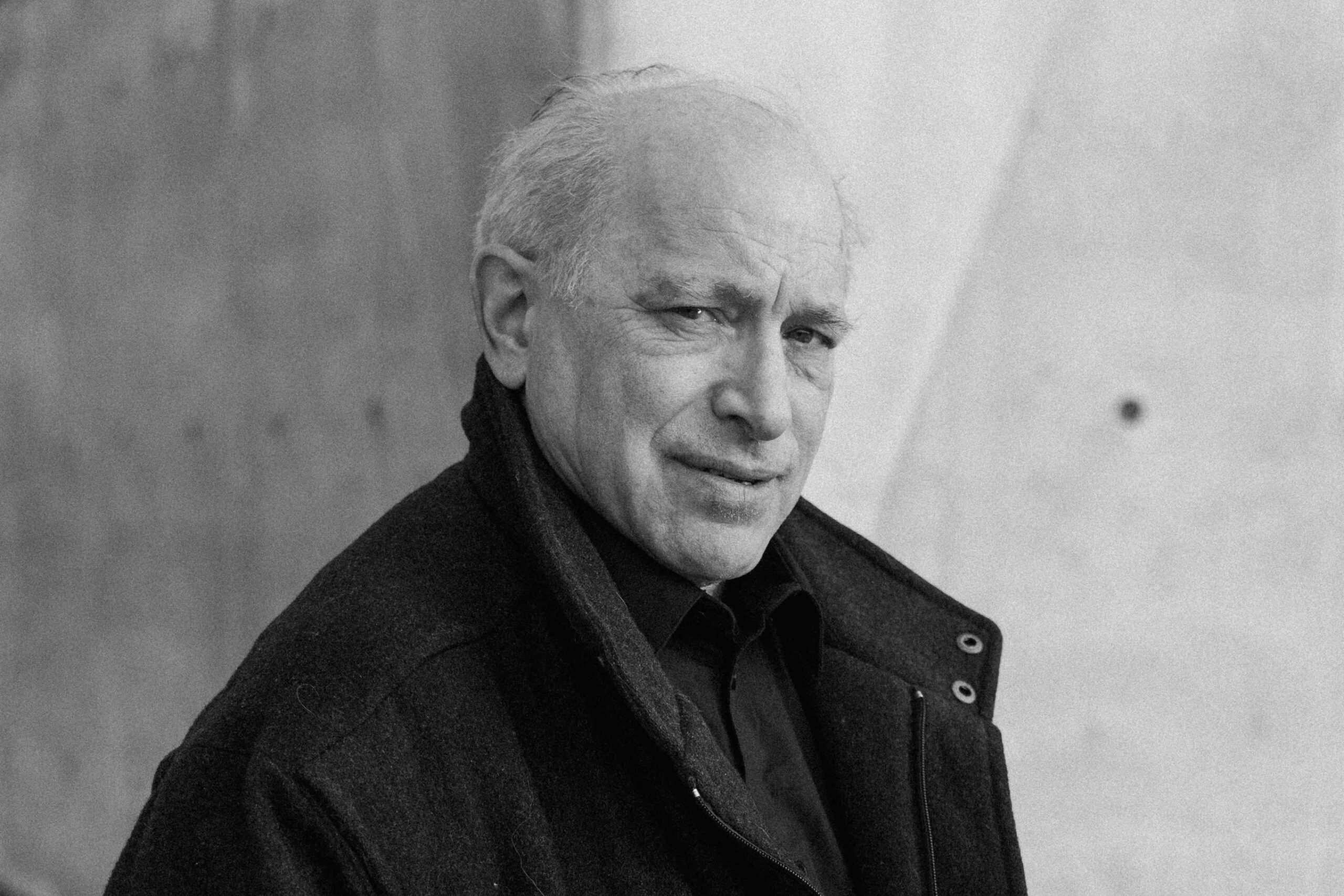Painting with Sound: A Conversation with Sam Newsome
|
Getting your Trinity Audio player ready...
|
From advertising jingles to a neighbor’s booming subwoofer we are continually surrounded by music. in modern life But what is “music”? Cannot a sound without a “musical” intent nevertheless have a musical element? Consider something as innocuous as taking a shower. If one truly listens to the water steadily pouring overhead, one can sense gravity creating a rhythmic pattern reminiscent of a steady drum. The continual whirs of the exhaust fan may prove similar to a droning string instrument. When perceived in this way, the sonic environment of the bathroom can produce an entire orchestra. But you seldom, if ever, hear such mundane sounds on a recorded medium. Yet, if music is to truly resonate with the listener, it should reflect the sounds we continually encounter in everyday life, not merely the “pretty” ones that fit on nicely sounding notes. As shown on Cosmic Unconsciousness Unplugged (self-release, 2023) and many of his other projects, saxophonist Sam Newsome understands the importance of capturing these sounds.
One can easily hit the highlights of Newsome’s career thus far. His time as a high school student in a band called Fantasy One with bassist James Genus. Studying at Berklee College of Music under the tutelage of George Garzone and Andy McGhee. Touring with Donald Byrd, albums with Terence Blanchard, and working with the Mark Morris Dance Group. Several albums under his own name, including six solo recordings. Serving as associate professor and music program coordinator at the Brooklyn campus of Long Island University. But these mere facts, by themselves, inadequately state what makes Newsome’s work unique.
More important is the fact that Newsome plays the soprano saxophone exclusively. While many saxophonists double on the soprano, it is somewhat rare for an artist to make it their primary instrument. Newsome’s dedication to the soprano allows him to expend his effort pushing the horn’s boundaries far beyond its conventional use. In this regard, Newsome is a trailblazing pioneer in prepared saxophone performance; using various tools to create new sounds on the horn. By adding plastic tubing to the neck of his saxophone, he can shift the instrument’s pitch higher or lower. Attaching rice-filled balloons or aluminum foil on the saxophone can add a rhythmic rattle to his notes. Newsome’s fascinating YouTube and Instagram videos continually show him testing the outer timbral bounds of his horn. While he did not create the prepared saxophone- though, remember, neither Bird nor Coltrane invented the alto or tenor – Newsome has stretched its capabilities far beyond anyone else.
These horn modifications ultimately extend from a core desire to reflect diverse sonic textures in his work. He seems to take delight in allowing external influences into his creative universe. One can witness this in his recent album with pianist Jean-Michel Pilc, Cosmic Unconsciousness Unplugged. The duo creates with no predetermined destination in mind. They each simply respond to what they hear in each other’s performances and let it lead their dialogue forward. The result is a recording that often sounds preplanned in the intricacies on display but never is. A particular highlight is the two-track “Bittersweet Euphoria”, where a fluttering sax and contemplative piano build to a gorgeous, emotionally stirring theme. It’s difficult to believe “Bittersweet Euphoria” was not meticulously composed well in advance, but it was entirely born at the moment of its performance. By opening up their work to let sound go where it feels naturally, whether one or both horns are prepared or unprepared, the duo produces a work with a vibrancy that can be felt deep in the heart of the listener.
We sat down with Newsome to discuss prepared saxophone and the new album.
PostGenre: How did you first get into using prepared saxophone?
Sam Newsome: Well, my interest in prepared saxophone stems from having explored extended techniques, things like alternate fingerings, different tonguing techniques, growling techniques, and multiphonics. I felt that I needed to go deeper into making less traditional sounds on the horn. But I also wanted some external influence to aid me in manipulating the air. I came across a few videos of some players using tubing, but none did it on the soprano.
I wanted to figure out how to use tubing on the soprano. I went to Home Depot and looked at some of their tubing. I guestimated the size that would fit on the neck of the soprano. But I also needed something for the mouthpiece. For that, I found another tube that fit inside that tube. I brought the tubes home and saw that I could make it work but needed the mouthpiece to be a little more firmly planted. So, I took one of the tubes to my repairman, Roberto Romeo, and told him I needed him to put cork on it so it could hold my mouthpiece, and he did, and it worked. After that, I began experimenting with various tube lengths. With a long heavily coiled tube, I could go very deep. I could go a few octaves below the typical range of the soprano. If I used something short – about three inches- I could get a very interesting bassoon or oboe-like sound. But it all started there, and I kept finding various ways to experiment, whether using balloons or any object I could find that would inspire me to think differently.
PG: How do you determine which modifications will or will not work? Is it mostly trial and error, or do you have a set method that you follow?
SN: There is certainly no mathematical or physics-based equation packed into picking my preparations. It’s all trial and error. I don’t worry too much about explaining the sound in a pitch context because, often, each tubing will have its own tone system. Instead of trying to explain the sound, I try to work creatively within that realm. I do know that each tube length will give me certain notes with which I can work. I just find ways to use those different notes to give me material to play with when I’m improvising.
PG: But by the time you are ready to record, do you know with certainty how the modifications will sound, or do you leave some of it to chance?
SN: I have an idea, but there’s always a chance factor that looms above. As I said, it is not an exact science. My bigger goal is to be inspired to think about and have a realm of sound with which to work.
PG: Do you have any sense as to why prepared saxophone is not more common?
SN: I think most sax players tend to think in a twelve-tone equal temperament mindset. If they’re not coming up with something that allows them to play the chromatic scale, or at least work with that type of vocabulary, they are a little outside their comfort zone. Because I play a lot of experimental music, I’m more used to working with textures even when not playing patterns or traditional melodies. If you can work with an emphasis on textures, a whole world of possibilities opens to you. No longer being concerned with how to fit something over a chord change or in a particular key significantly broadens what you can say musically.
PG: The soprano is the sole instrument you have played since 1995. In a prior interview, someone asked you why you stopped playing other types of saxophones. You responded that you had to choose between being a musician and being an artist and that working with the soprano let you be an artist. Would you mind elaborating on that comment a bit further?
SN: Absolutely. Mind you, I could be an artist on the tenor saxophone or any other saxophone. But my career would have been very different if I had kept with the tenor. I may have had some big band or quartet gigs. Many who play tenor also double on flute or clarinet and are required to be versatile. Before the soprano became my focus, I was limited, at the time, in terms of both how much control I had over the instrument and my opportunities to play it.
Focusing only on the soprano forced me to be significantly more deliberate with my energy. I’ve been able to no longer concern myself with continuing the tenor saxophone legacy or paying homage to a particular person. I saw the soprano as a blank canvas on which I could create anything I wanted. That is how the artistic aspect comes in. What I meant by saying I am an artist is that I’m creating exactly what I want to create, not making music that may further a desire to be popular.
PG: Of course, preparing the soprano provides an even broader sonic palette. But while prepared saxophone is rare, prepared piano seems much more common. Do you take much inspiration from prepared piano, or is that separate from what you do with prepared sax?
SN: The idea of prepared piano has been an inspiration. But in terms of the actual sounds I produce, I’m generally more inspired by the sounds I hear in everyday life. Living in an urban environment, there’s no shortage of noise, whether a car horn, the brakes of a truck, birds, doors slamming, metal screeching, or planes flying above. Each has different textures. When I started getting into prepared saxophone performance, those types of sounds became sources of inspiration for me. I no longer heard them as noise per se in the sense of something I didn’t want to hear. They instead became a part of the sonic backdrop of life. I take inspiration from all kinds of sounds and the work of those who prepare their instruments. Do you know the guitarist Sandy Ewen?
Sandy is unique because she never learned to play the guitar conventionally. She puts her guitar on her lap and plays it like one of those old Blues guitar players. She plays it like a pedal steel. She later adds various electronics and things that vibrate to create feedback to pull various textures out of the instrument. I’ve been very inspired by her approach and try to apply some of what she does to the saxophone as a conduit to get to some unique sound.
PG: Is that why you do many solo recordings? Do you feel like you can better reflect the sounds you hear when working on your own?
SN: Yes, initially. I started doing solo projects because I felt that often, with extended techniques, there were many nuances I wanted to work with that were hard to reach when I was playing with other people. Often, I need a sensitivity around me to play things like multiphonic fingerings. With certain fingerings, you need to deeply finesse the air. You can’t just blow at full volume. I found when I’m playing solo, I don’t have to deal with external distractions and see whether others can give me the space I need. I can truly focus on having a more nuanced approach to sound.
But as I’ve become more comfortable in learning how to control my sound using extended techniques, I’ve begun playing with a lot more people. I no longer have to play in a solo context to get the sound I am seeking. I just need some space to get some of the nuances and textures I like to play.
PG: On Cosmic Unconciousness Unplugged, Jean-Michel uses prepared piano at certain times. Is it more difficult to get the sound you seek when your partner is similarly experimenting with his own technique and sound?
SN: Oh yeah, working with him on a prepared piano differs significantly from working with him playing unprepared. One difference is that by preparing the piano, he also limits himself to working within a certain realm. So, the type of vocabulary we come up with is minimal compared to if he didn’t put those limits on himself. We’re not going to have the same type of connection or synergy when he is playing in a prepared state.
PG: As far as your connection with Jean-Michel, you have been working together since the mid-1990s.
SN: Yeah, we met when working together for the French singer Elizabeth Kontomanou. Jean-Michel later had a band called Cardinal Points in the early 2000s, and I played with him in that context. We’ve worked together in numerous configurations over the years.
PG: Do you think that having a long working relationship together significantly impacts how you communicate with one another musically?
SN: It’s interesting. In some ways, I am not always convinced that having the experience of playing together is that important. I think it is more important that we understand where each other is coming from.
Sometimes it works, and sometimes it doesn’t. I’ve had situations where it felt so effortless to play with certain musicians. And there have been other times I have played with other musicians, and it felt like a chore. Playing with Jean-Michel has always felt good. Even from the very beginning. I don’t think the fact we have played together for so long plays into things because it’s always felt good.
PG: So, does how you interact with one another change over time? Has your musical communication changed since your prior duo recording Magic Circle (self-release, 2017)?
SN: Oh yeah. I think we’re a lot freer now. Back then, the tunes also didn’t last as long. We put Magic Circle together by recording twenty-minute sets. We would play nonstop for about twenty minutes with four or five musical episodes, with one leading into the next. After about twenty minutes, we would finish, take a break, then do another twenty-minute set. After we had finished recording, we rearranged episodes to fit the album. So, we would take the third movement from the fourth set and put it next to the second movement of the first set. With Cosmic Unconsciousness Unplugged, we were much freer in how we approached our performances than using twenty-minute sets.
PG: One thing both albums share, however, is that each of the tracks on both are first takes. You did not go back and re-record anything.
SN: Yes, with both recordings, we had no second takes.
PG: How important was it to you that there be no second takes?
SN: Well, it’s interesting because we never consciously thought about it when we were putting the albums together. We never affirmatively decided to avoid any second takes. It never came up. We just let the music naturally go where it wanted. When we play something, it either works or it doesn’t. We didn’t discuss the music much beforehand. Whenever we played tunes, we didn’t even discuss the tune we were going to play beforehand. We didn’t have an agenda as far as the right or wrong way to play something. Instead, Jean-Michel would play something that would inspire me, and then he would follow what I did, and we would go from there.
PG: That there was no preset plan for the tracks is remarkable. The two-part “Bittersweet Euphoria”, for one, is gorgeous and sounds like something you would have needed to have planned. How did “Bittersweet Euphoria” come together?
SN: I don’t even know. It’s very magical and difficult to explain. We started playing and went on this journey with no idea how it would go. Jean-Michel started with a sound or chord, and then we went off. Only after the fact do we realize how intense the music became. That’s one of the beauties of what we do as a duo. It all starts from a blank canvas.
PG: That is the second time you have mentioned a canvas. In the past, you have even referred to your music as painting with sound.
SN: Absolutely. And that goes back to thinking in terms of texture. One of the classes I teach is called “Music and Culture.” In that class, sometimes we talk about jazz. I can play some Cecil Taylor, and it may not make sense to students. But they can better understand his work if they also look at a Jackson Pollock painting. Their art was different – Taylor was pushing the reach of piano and Pollock of painting – but, in a larger sense, they also both did the same thing. They are both abandoning traditional ways of creating on their medium. I look at all of my various preparations and the different sounds I’m able to get from them as different colors I can use to paint. I like to pull those colors out, and mix and match them with others, and see what I can create.
‘Cosmic Unconciousness Unplugged’ is now available. It can be purchased on Bandcamp. You can learn more about Newsome on his website.



